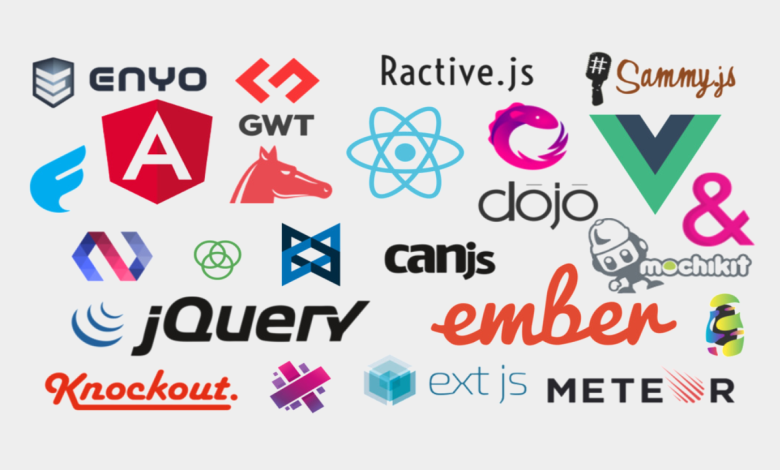A Guide to Modern Front-End Frameworks

Front-end development has evolved rapidly over the last decade. From plain HTML, CSS, and vanilla JavaScript, we’ve moved into a world of powerful frameworks that simplify building complex, interactive user interfaces.
But with so many choices—React, Angular, Vue, Svelte, SolidJS—how do you decide which one to use? In this article, we’ll explore the most popular front-end frameworks, compare their strengths and weaknesses, and help you choose the right tool for your next project.
1. Why Do We Need Front-End Frameworks?
Modern applications demand:
- Reusable Components → Build once, use everywhere.
- Reactive UIs → Automatically update when data changes.
- State Management → Handle complex app logic.
- Performance Optimizations → Virtual DOM, hydration, code splitting.
Frameworks streamline these challenges and provide structure, scalability, and efficiency.
2. The Most Popular Front-End Frameworks
a) React
- Developed by Facebook.
- Component-based with Virtual DOM.
- Huge ecosystem (Next.js, React Native).
- Flexible but requires third-party libraries for state management (Redux, Zustand).
b) Angular
- Developed by Google.
- Full-featured framework with built-in routing, forms, and dependency injection.
- Strong TypeScript support.
- Steeper learning curve compared to React.
c) Vue.js
- Developed by Evan You (ex-Google).
- Lightweight, approachable, and flexible.
- Strong ecosystem (Nuxt.js for SSR).
- Great for beginners and small-to-medium projects.
d) Svelte
- Compiles code at build time (no Virtual DOM).
- Extremely fast and lightweight.
- Smaller ecosystem compared to React/Vue.
e) SolidJS
- Newer framework focused on fine-grained reactivity.
- Extremely fast with small bundle size.
- Still growing, not as mature as React or Angular.
3. Comparing Frameworks
| Feature | React | Angular | Vue.js | Svelte | SolidJS |
|---|---|---|---|---|---|
| Learning Curve | Medium | High | Low/Medium | Low | Medium |
| Ecosystem | Huge | Large | Strong | Small | Small |
| Performance | High | High | High | Very High | Very High |
| TypeScript Support | Good | Excellent | Good | Good | Excellent |
| Popularity | ⭐⭐⭐⭐⭐ | ⭐⭐⭐⭐ | ⭐⭐⭐⭐ | ⭐⭐ | ⭐⭐ |
4. Use Cases for Each Framework
- React → Best for large-scale applications, startups, and when flexibility is needed.
- Angular → Best for enterprise apps with complex requirements.
- Vue.js → Best for small-to-medium projects and quick development.
- Svelte → Great for high-performance apps with minimal bundle size.
- SolidJS → Cutting-edge projects focusing on performance and reactivity.
5. Ecosystem and Tooling
- React → Next.js (SSR), Gatsby (static sites), React Native (mobile).
- Angular → Angular CLI, RxJS, full-stack tools included.
- Vue → Nuxt.js, Vue CLI, Vite.
- Svelte → SvelteKit (meta-framework).
- SolidJS → SolidStart (meta-framework, still evolving).
6. Performance Considerations
- React and Vue use a Virtual DOM.
- Angular uses real DOM with optimizations.
- Svelte and SolidJS compile code at build time → no Virtual DOM, resulting in faster execution and smaller bundles.
7. Future Trends in Front-End Development
- Server-Side Rendering (SSR) and Static Site Generation (SSG) are becoming standard (Next.js, Nuxt, SvelteKit).
- Islands Architecture (Astro, Qwik) → Faster page loads by hydrating only interactive parts.
- TypeScript-first Development → Most modern frameworks encourage TypeScript.
- Performance-Driven Frameworks like SolidJS and Qwik are gaining traction.
8. How to Choose the Right Framework
Ask yourself:
- What’s the scale of my project? (small app vs enterprise).
- What’s the learning curve my team can handle?
- Do I need flexibility or an all-in-one solution?
- How big is the community and ecosystem?
✅ Rule of thumb:
- For enterprise → Angular.
- For startups → React.
- For beginners → Vue.
- For performance → Svelte or SolidJS.
Conclusion
Modern front-end frameworks have revolutionized how we build web applications. While React, Angular, and Vue dominate the landscape, newer frameworks like Svelte and SolidJS are pushing innovation further.
The best choice depends on your project needs, team expertise, and long-term scalability. But one thing is clear: mastering at least one modern framework is essential for any front-end developer today.

